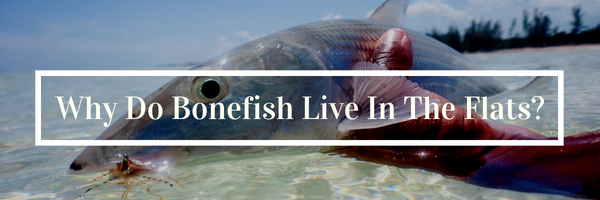Although there are many species that populate warm temperature flats, bonefish are undoubtedly the most popular.
These fish are well-known for their reel-stressing runs, their impressive strength, and the considerable challenge that they pose to even the most seasoned fishers. For anglers who are ready to flex and expand their fishing skills, casting for bonefish is definitely a worthwhile endeavor. These fish are plentiful in warm, quiet waters such as tropical, intertidal flats. The flats lack the abundance of boats, tourists, and noise that’s known to scare them away. Following are four reasons why bonefish frequent these areas.
The Flats Are Rich With Food
The typical bonefish diet includes mollusks, worms, shrimp, and crabs. All of these species are plentiful in the flats. This makes these low-level waters the ideal place for bones to hunt. You’ll often find them “mudding” or “tailing” in these areas which means that they’ll either be stirring up the detritus at the flat bottom among the sea grass, or burying their snouts in the sandy beds of the flat bottom while flashing their wavering tails just above the water’s surface.
The Flats Provide Decent Protection From Large Predators
The flats are not sufficiently deep for the large-sized predators that bonefish would otherwise have to watch out for. These include jacks, sharks, and barracuda. In the flats, bones can spend more of their time as hunters, rather than playing the role of prey. In the right locations, there are no noisome boats, no large crowds of people, and very few disturbances at the water’s surface that might make them nervous. Despite the relative comfort and safety that the flats provide, however, bonefish remain highly vigilant and very easy to spook. Fast, surface movements, flashes of bright color, and even suspicious smells can easily send them on their way.
Bonefish Have The Ability Tolerate The Oxygen-Poor Water
One trade-off for swimming in low-level waters that are virtually free of large-sized predators is having to survive in an oxygen-poor environment. Fortunately for bones, they’re actually made to tolerate these conditions. They can inhale air into lung-like bladders to make up for this deficiency.
Bones Like To Move
Bones can be found in intertidal creeks, mangroves and flats in schools of a 100 or greater. These fish typically adhere to a daily pattern that brings them into the flats with the rising tide and back out to deeper areas when the tide falls. Moreover, schools of bonefish are unlikely to stay in a single site for more than just a few days. After a relatively small amount of time has passed in the flats, a group of bones might migrate to a nearby channel, bay, or creek for a short time, before again heading to a new environment.









